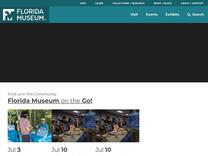Turtle shells help decode complex links between modern, fossil species – Research News https://www.floridamuseum.ufl.edu/science/turtle-shells-decode-links-between-modern-fossil-species/
Imagine that Labradors and golden retrievers died out a million years ago, leaving only fossilized skeletons behind. Without the help of DNA, how could we determine that a fossil Labrador, a fossil retriever and a modern Chihuahua all belong to the same species, Canis lupus familiaris? And could we
“A lot of it is trying to figure out what we can do with what we have at hand to

